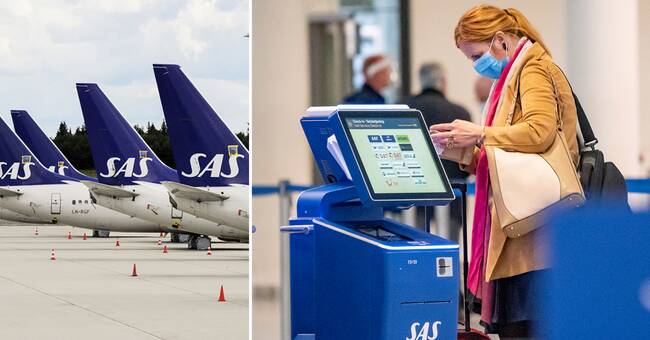"We are happy" were the first words from CEO Richard Gustafson in SAS's previous quarterly report, the one that applied to May, June and July.
But the joy, that "demand is slowly returning" is as if blown away now.
In today's quarterly report, it is gloom that counts.
It is increasingly sparse between passengers, losses have increased to SEK 3.2 billion, and 70 percent of SAS's market has corona restrictions.
The latest killing blow came after the end of the quarter, when the Norwegians would no longer fly domestically.
Lock call to new owners
It can not in itself be ruled out that the great contrast between the messages then and now not only reflects reality but also has to do with SAS when, in August, had not yet finished with the large and vital rescue plan, the one that would give SAS 12 new billion to get out of the crisis with.
Attracting owners and lenders to invest even more billions in a perpetually crisising airline, at the moment almost completely without operations, will be a little easier if you do not make the whole project seem doomed when you describe the situation.
But information from SAS about the future is still, despite everything we know about extensive spread of infection and increasing shutdowns, unexpectedly gloomy.
Silent about the future
That it will go badly next quarter is no surprise, but that the management says so little about the future after that.
The management feels confident that there is a pent-up need for travel, which was seen last summer.
But the question is what it says about SAS's opportunities to survive.
The Scandinavians who can afford to go to the sun in the winter and now do not get away, certainly feel pent-up enough.
Especially if they have now finally got their money back for canceled flights earlier this year - SAS states that they have increased the pace of slow payments and now have 900 million left to pay back.
But holiday-hungry Scandinavians are not enough to get SAS on its feet.
Business travelers are also needed.
And now, nine to ten months into the pandemic, new, sharp competitors to SAS have emerged: with names like Microsoft Teams and Zoom.
The fact that the industry is doing so well in many places possibly indicates that it is actually possible to do business without traveling, in a way that perhaps few people thought before the pandemic broke out.
Corporate travel can also be reduced.
There are many examples of large companies with operations in many places having succeeded in the past when they have been in crisis.
Expect new ownership proposals
Today, SAS says that the recovery will last until 2022, that travel thereafter will be "normal" and that it will reach the levels before covid-19 a few more years after that.
It probably does not feel completely stable for SAS owners.
With the loss that was reported today, SAS has already started burning the twelve rescue billions.
It was also announced today that SAS is looking for even more billions to strengthen its coffers.
It is about selling aircraft and borrowing money from the Norwegian state, among other things.
The Swedish and Danish governments, which in this crisis were forced to invest several billion each and go up to 21.8 percent ownership each, may nevertheless nevertheless get new props eventually.

